Last Updated on December 7, 2023
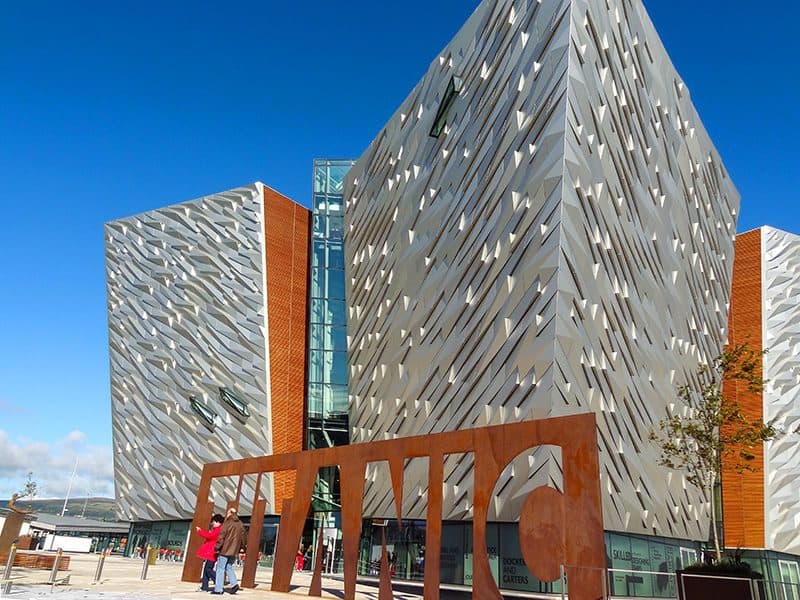
Estimated reading time: 8 minutes
By Jim Ferri
My first “encounter” with Belfast’s Titanic Museum took place, oddly enough, in a bar in Quito, Ecuador.
My wife and I were sitting in a small lounge in the Plaza Grande Hotel, sipping and chatting with a family from Belfast. I had been to Ireland many times, but never to the North, and I asked them about the famous Titanic Museum.
The husband sat straight up and replied, “Can you believe they built a museum for one of the greatest tragedies in history?”
“But as we say in Belfast,” he continued, “…it was okay when it left here.”
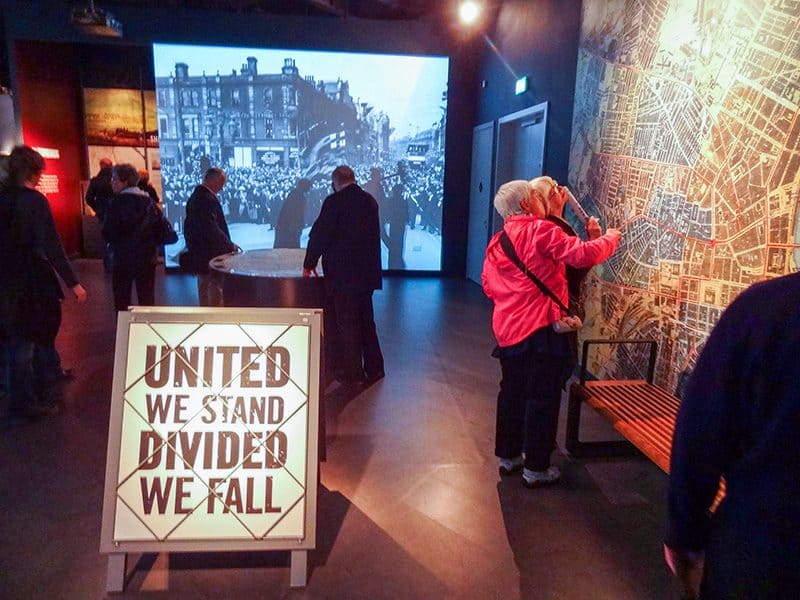
At the Titanic Museum Belfast, 5 Months Later
I remembered his wit when I visited Belfast five months later. On that visit, the museum was also at the top of my must-see list.
When I arrives I didn’t know what to expect since I hadn’t read much about it. But I was stunned both by the design of the building and the design of the exhibit inside. I’ve never been so mesmerized by an exhibition of this type. Likely, you’ll be also.
The exhibit takes you from the conception of the ship right through to its final resting place on the floor of the North Atlantic. It’s a world-class exhibit well worth the price of admission and, possibly, the cost to get to Belfast, as well.
One way to keep that cost down, however, is to take a day trip by train to Belfast from Dublin. It’s quick and it’s easy.
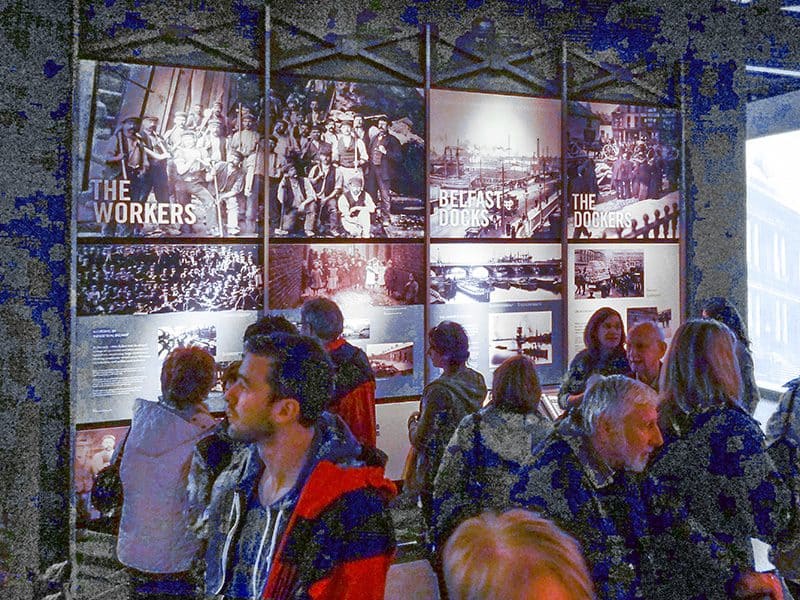
Look at the Exterior of the Museum First
When I stepped out of my taxi on my visit to the Museum, I looked up at a building. At first, all I saw was huge pieces of steel jutting out from a glass core. It reminded me of a piece of modern art.
The I realized that the four masses of steel each replicate the bow of the Titanic. At 90 feet tall they’re the same height of its hull from keel to deck. It also has a covering of 3,000 silver anodized aluminum sheets. They were designed by the architects to reflect the water from pools at the base of the building. They give the illusion of waves around the hull.
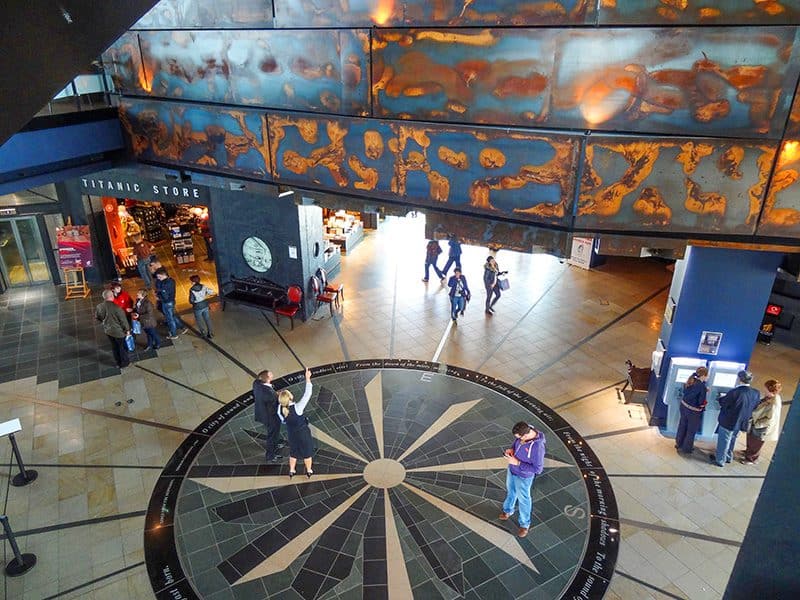
The Titanic sign in front of the building is titanic also. Much like the steel on the ship itself, it’s cut from a plate almost an inch thick and weighs 16 tons, the same as Titanic’s forward anchor. But I found more Titanic-related surprises inside.
The industrial feel of the atrium, with rough-hewn wood beams and steel all about, was surprising. After a minute or two, however, I realized it replicated the feel of the shipyard, . The 60-foot high wall of the 20,000 ft.² space was covered with metal panels similar to those used on Titanic’s hull. Even the ticket desks were shaped like large portholes.
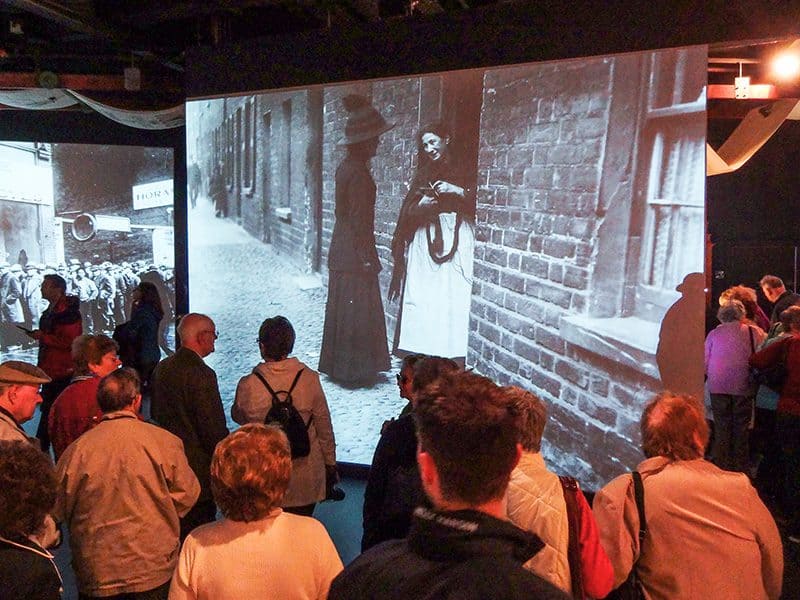
The Phases of Titanic’s Life
Once in the museum you walk through nine different galleries, each depicting a different phase of Titanic’s life. The first, fascinating in itself, shows life and working conditions in Belfast 100 years ago as plans were being made to build the ship.
From there you go on to the Arrol Gantry and shipyard ride in the second gallery. En route you get the feel for the shipyard or, at least, as much as one can get in a museum, as you walk by steel plates, ladders leaning against the hull, etc.
The shipyard ride, in cars holding six people, flies you through different facets of the building of the ship, winding among steel beams and plates, with the sounds of hammering and riveting all about as black-and-white photos and video recreations take you back in time. It’s all done exceptionally well.
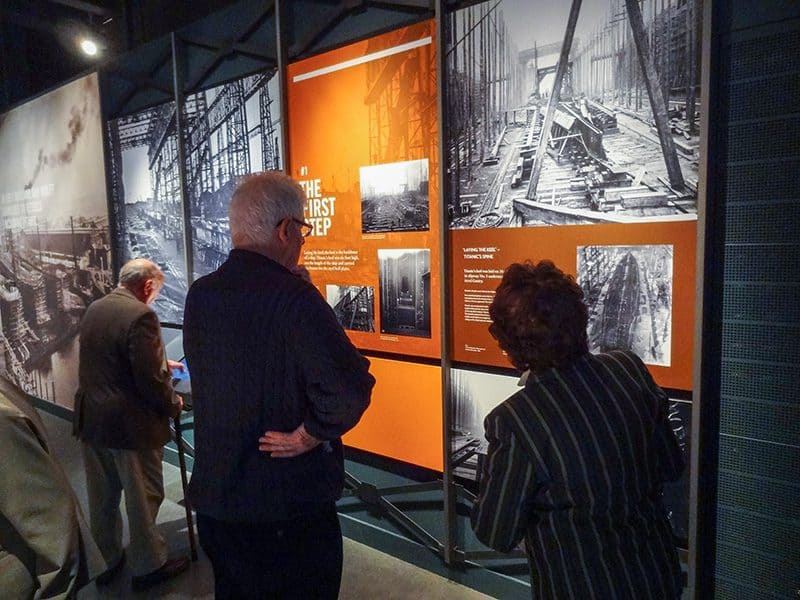
The launch of the ship in gallery three, seen on a large television monitor positioned over a great pile of huge anchor chain, follows the shipyard adventure. I was also captivated by the old movie footage of the launch, as were others, and we watched the workmen in the lower right who looked as small as ants next to the giant hull.
With the exception of the ride in gallery two, you move through it all at your own pace, and many of us stayed and watched the launch several times. You can see a one-minute video of Titanic’s launch by clicking here.
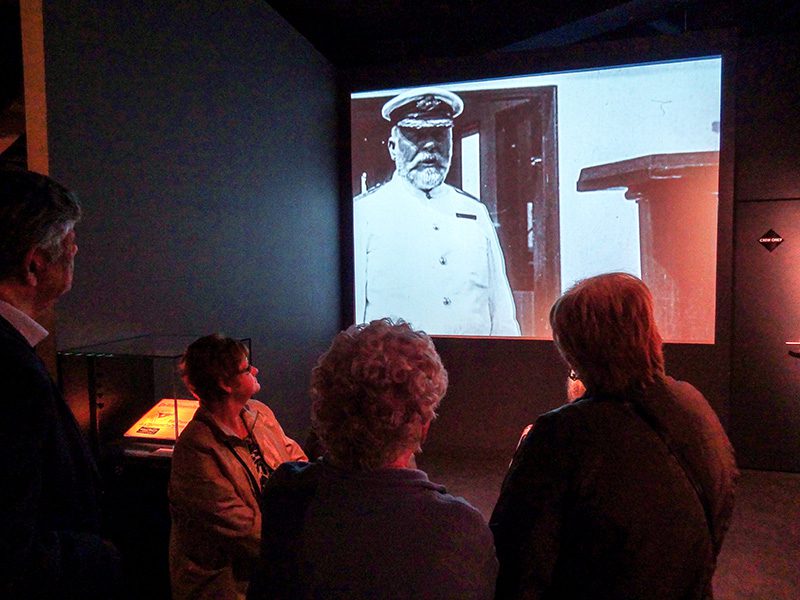
Boarding On the Maiden Voyage
The fourth gallery in the Titanic Museum, Belfast depicted and explained the fitting out of the ship from the engine room right up to the first class cabins. Gallery five draw lot of interest with its movie footage of people boarding for the maiden voyage. It also shows the great sendoff of the ship from Southampton.
Gallery four also captivates people with its superb video production, a 270° panorama of the interior of the Titanic. It takes you from the keel of the ship and the engine room, right up deck-by-deck to the bridge. It’s a view of the ship never seen before and if you’ve ever wondered what Titanic’s luxurious first-class staterooms looked like, this is the place to linger.
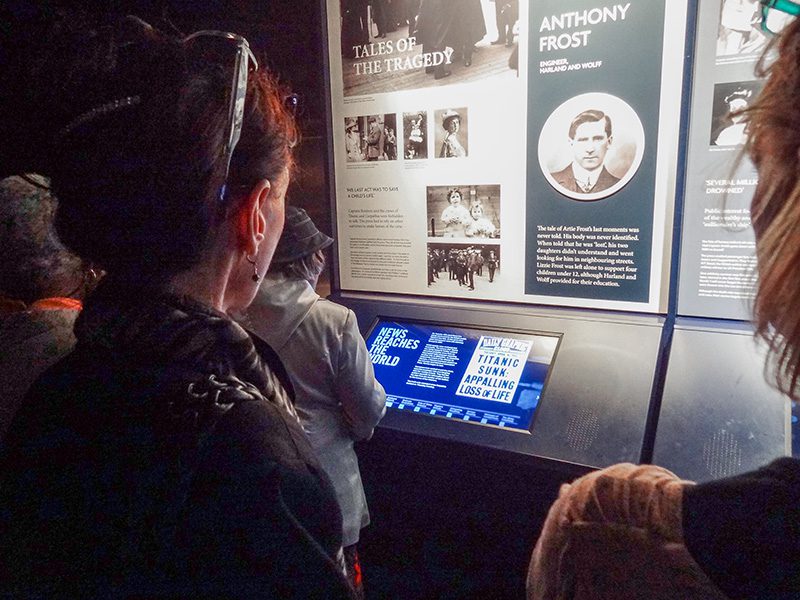
The News Spreads Around the World
The next two galleries, six and seven, depict the sinking of the liner and the aftermath of it as news of the tragedy spread around the world. From our present-day perch in a high-tech world of TV and Internet, it was also fascinating to watch news of the disaster slowly unfold day-by-day on front pages around the world.
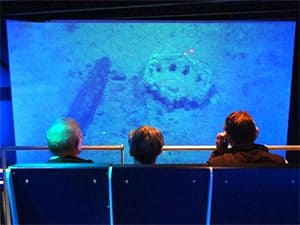
For me, though, one of the most interesting galleries was gallery eight. In addition to the exhibits on the walls that showed the many movies and books that proliferated from the tragedy, there were touchscreen computers that presented many of the myths and legends of the great liner, and separated fact from fiction. Much that I read surprised me.
The exhibit draws to an end in gallery nine as you take a journey to the bottom of the North Atlantic with Dr. Robert Ballard who discovered the Titanic in 1985. It’s a most interesting exhibit since it has exclusive footage never seen elsewhere.
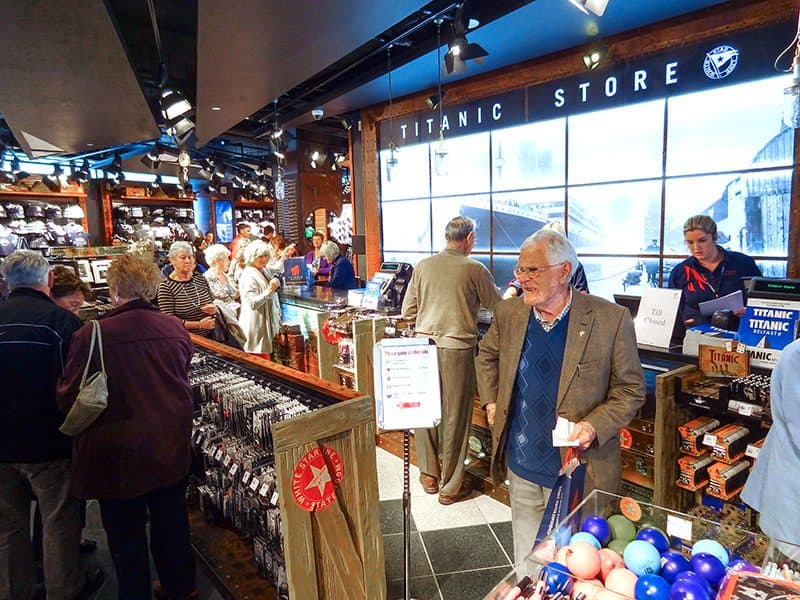
Other Things to See
Outside of the museum, but close by, you’ll also find several other sites related to the Titanic and well worth visiting. The slipway of the ship is to the left of the museum, and the office of Harland & Wolff, the ship’s designers, is to the right.
The SS Nomadic, the tender that served the ship in Cherbourg, is a minute’s walk away and Titanic’s dry dock and pump-house, is just a five-minute walk from Titanic Belfast.
Not surprisingly, the Titanic Store lures many people after their tour through the galleries. It’s likely one of the busiest museum shops in all of Europe, if not the world.
If you go:
Titanic Belfast
Titanic Quarter Limited
Belfast BT3 9DT
Tel: +44 (0) 28 9076 6386
http://www.titanicbelfast.com
Admission (all prices in pound sterling): Adults £24.95; 60+ / students £19 (weekdays only) / children 5-15 years £11 / Family Pass (2 adults, 2 children) £62(weekends)
Northern Ireland Tourist Board
59 North Street
Belfast BT1 1NB
Tel: +44 (0) 28 9023 1221
http://www.discovernorthernireland.com/

Hi Jim,
Great description. Usually, I only linger when on a brewery tour, but this could be an exception!
Cheers – Stan
Hi Stan,
This should definitely be an exception!
Jim